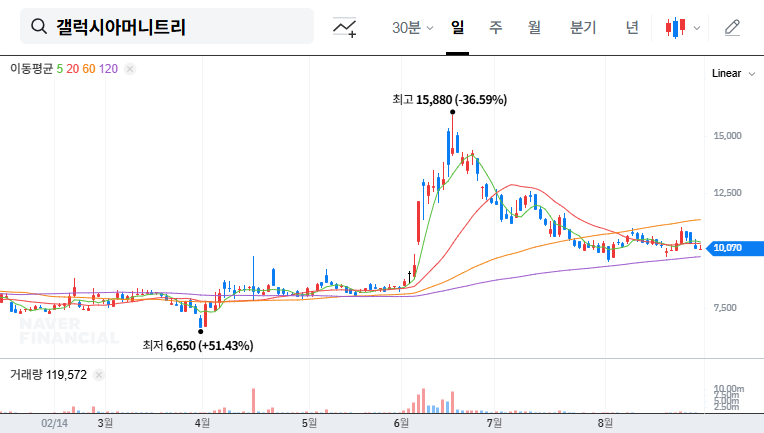
1. Key IR Takeaways: H1 2025 Results and Future Growth Strategy
Galaxia Moneytree recorded sales of KRW 63.585 billion (down 5.0% YoY), operating profit of KRW 9.537 billion (up 44.9% YoY), and net income of KRW 5.525 billion in the first half of 2025. While the electronic payment business maintained solid performance, the overall sales decreased due to sluggish O2O business. However, both operating profit and net income improved significantly, thanks to cost efficiency and growth in new business areas. Galaxia Moneytree is focusing on securing future growth engines by promoting new businesses such as STO and blockchain.
2. Why is Galaxia Moneytree Focusing on STO and Blockchain?
Amid intensifying competition in the electronic payment market and volatility in the O2O market, Galaxia Moneytree is seeking new growth opportunities in STO and blockchain businesses. The STO market has high growth potential, and Galaxia Moneytree is actively investing in technology development and platform construction to preemptively secure the market.
3. Key Investment Points and Action Plan for Investors
When investing in Galaxia Moneytree, it’s essential to consider the growth potential and risks of new businesses in a balanced manner. Although the growth of the STO and blockchain market is attractive, risk factors such as regulatory uncertainty and intensifying competition also exist. Before investing, it is advisable to thoroughly review IR materials and related information and consult with experts. Future stock prices may fluctuate depending on the performance of new businesses and market conditions, so continuous monitoring is necessary.
What are Galaxia Moneytree’s main businesses?
Galaxia Moneytree operates various businesses including electronic payments, O2O (Online-to-Offline), STO (Security Token Offering), and blockchain.
How was Galaxia Moneytree’s performance in the first half of 2025?
While sales decreased compared to the same period last year, operating profit and net income improved significantly.
What are Galaxia Moneytree’s future growth engines?
The company aims to secure future growth engines through investments in new businesses such as STO and blockchain.

